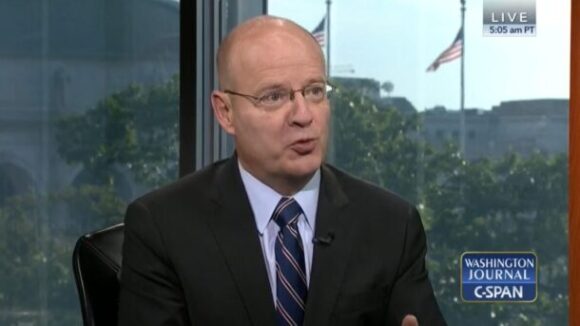Will Team Biden Weaponize Workers’ Pensions?
Big Labor abuse of worker pension and benefit funds as a means of advancing union bosses’ self-aggrandizing policy objectives is a familiar phenomenon.
As recently as 2000, the year of the extremely close and contentious presidential contest between George W. Bush and Al Gore, 36.4%, or barely more than a third, of all private-sector employees in the U.S. held a job located in a Right to Work state.
By last year, the Right to Work share of American private-sector employment had risen to 44.6%. The rapid Right to Work expansion over the past decade-and-a-half has occurred largely because of the enactment of new laws prohibiting compulsory union dues and fees in Oklahoma, Indiana and Michigan, but also in substantial measure as a result of the ongoing net migration of millions of employees out of states that still don’t protect the individual employee’s freedom of choice.
As an editorial appearing in the Albuquerque Journal this week (see the link below) discussed, the New Mexico Legislature is expected to debate and vote on a state Right to Work measure early next year. In calling on elected officials to make Right to Work part of the Land of Enchantment’s 2015 legislative agenda, the editorial emphasizes job creation.
It is certainly true that a state’s Right to Work status is strongly correlated with faster job growth, but the primary reason for banning forced unionism is that it’s just plain wrong for public policy to promote the termination of employees for refusal to bankroll a private organization that they prefer not to join.
Fortunately, in 2015 Right to Work measures may come up for consideration not just in New Mexico, but also in a number of the other remaining forced-unionism states, including Montana, Missouri, Kentucky, Ohio, West Virginia, Pennsylvania, New Hampshire and Maine. No wonder freedom-loving Americans are cautiously optimistic that, within a few years, more than half of all U.S. private-sector jobs will be located in Right to Work states.


Big Labor abuse of worker pension and benefit funds as a means of advancing union bosses’ self-aggrandizing policy objectives is a familiar phenomenon.

What impact does handing a union monopoly power to deal with your employer on matters concerning your pay, benefits, and work rules have on your pay?

Federal Labor Board has now certified majority decertification vote to end AFT union officials’ “representation” at KIPP Charter High School